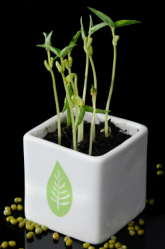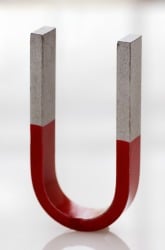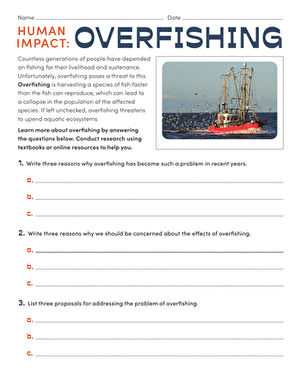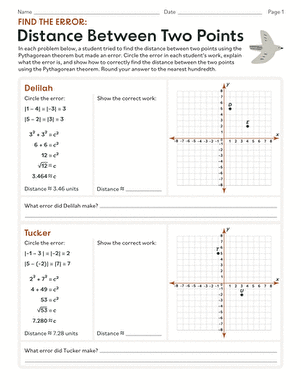Science project
The Impact of Distance on the Doppler Effect
Difficulty of Project
Easy
Cost
$2 or less
Safety Issues
None
Material Availability
Readily available from home.
Approximate Time Required to Complete the Project
2 weeks. This includes the basic research, recruitment of subjects, experimentation, collection, recording and analysis of data, summary of results and completion of bibliography.
Objectives
To determine the impact of distance has on the Doppler Effect.
Materials and Equipment Required
- battery operated electric shaver
- 10 blindfolds
- student response sheets
- chart for summary of data
Introduction
Background Information
On the information level, this experiment serves to acquaint students with current information on the Doppler Effect or as it is sometimes called the Doppler Shift. We tend to hear different sounds when the source of the sound is approaching, is in motion or receding. This shift is prevalent in all wave motion, both mechanical and electromagnetic. The practical applications of this effect or shift include radar detectors measuring the speed of automobiles, astronomers measuring the distance and speed of light emerging from distant galaxies to physicians monitoring the health of a fetus by means of the Doppler shift in ultrasound. The research for this project alone acquaints the student with the multitude of practical and significant applications of a single discovery in physics.
This science fair experiment also serves to acquaint students with the essential processes of sciencing such as the importance of the use of a control, of identifying dependent and independent variables, of data collection, of pictorial and or graphic presentation of data and of being able to make better judgments as to the validity and reliability of their findings. They take on the role of scientists and in the process they learn to act as one.
Research Terms
- Doppler Effect
- Doppler Shift
- sound waves
- vibrations
- frequency, high, low
- amplitude
- radar
- Doppler Radar
- pitch
- red shift
Research Questions
- What is the Doppler Effect or Shift?
- How was it discovered?
- How could you demonstrate the effect in terms of sound?
- What is the so-called “rule of thumb” about the Doppler Effect?
- What are some of the significant and practical applications of the Doppler Effect?
Terms, Concepts and Questions to Start Background Research
- What is a control? A control is the variable that is not changed in the experiment.
- What purpose does a control serve? It is used to make comparisons as to what changed or possibly caused the change.
- What are variables? Variables are factors that can be changed in an experiment.
- What is an independent variable? The independent variable is the one that is changed in the experiment.
- What is a dependent variable? The dependent variable is the one that changes as a result of the change in the independent variable.
Student Response Sheet and Chart of Data
In this experiment, use student response sheets and charts to display the obtained data such as the following sample:
Description of Student Response Sheet
What was heard! How did the sounds differ or were they the same? Be as specific as you can. If you fail to hear the sound, just record this on your sheet.
Student # ___
|
Sound #1 |
Sound #2 |
Sound#3 |
|
|
|
|
Experimental Procedure
- State the problem you are going to investigate in this science fair project.
- Create and reproduce the subject response sheets and the summary data sheets you will use to record your observations.
- Recruit ten of your classmates to serve as subjects for this experiment. Acquaint them with their role will be. Explain that they will be blindfolded and will placed in three situations in which they will listen to sound s being made by a battery-operated electric razor and will be asked to describe how the sound actually sounds in the process. Do not ask does it get louder or softer and remain the same. That would be a giveaway. Just ask for a description of what they hear. They are free to add any other comments in each of the three cases
- Conduct this experiment in two shifts of 5 subjects a t a time. Place the subjects in seats arranged in a line equidistant from where you will start. Provide the subjects with their response sheet and a pencil. Explain that they will listen to three sound s from varying distances and that after listening to each of the three sounds they will be instructed to remove their blindfolds and record what they heard, namely they were to contrast the sounds, how were the sounds different if indeed they were.
- Have the student put on their blindfolds and alert them to listen. Tell them that this is the first sound. Start at a location very close to the subjects, turn on the electric razor. Do not move. Stand there for one minute with the shaver running. Then turn it off.
- Now, starting from where you are, announce that this is the second sound. Turn on the electric razor, and walk very slowly to the back of the room. You should be walking the distance of at least 40 feet. If the room is too small continue walking into the hall. Return and announce that the next sound is the third sound. Now turn on the electric razor again and this time start moving from the back of the room very slowly back to your subjects stopping directly in front of them. When you get directly to the front, turn off the razor.
- Direct the subjects to remove the blindfolds and record their results.
- Collect their reports and record the data on your chart. Remind the subjects that they are not to share their results with the next group of subjects.
- Repeat the same procedure with the next five subjects Add this data to your chart. Analyze the charted data and formulate your conclusions.
- Prepare your report and include all of the following: a clear statement of the problem, your hypothesis, namely what did you predict would occur. Include a list of the materials used. Include the safety precautions taken. Describe the procedures used. Include all the data that were gathered. Include all charts. Explain the purpose of the control. Formulate your conclusions. For dramatic value, you may include photos of the materials used or of you in the process of conducting this investigation. You may wish to create a power point presentation of this experiment to share with the total class. Include a bibliography of sources you used. You may wish to assess what you did and describe what you would do differently if you were to do this project again.
Bibliography
- Alexander Taffel, Ph.D. Physics, Its Methods and Meaning
- Paul W. Zitzewitz,Ph.D. Physics, Principles and Problems
Education.com provides the Science Fair Project Ideas for informational purposes only. Education.com does not make any guarantee or representation regarding the Science Fair Project Ideas and is not responsible or liable for any loss or damage, directly or indirectly, caused by your use of such information. By accessing the Science Fair Project Ideas, you waive and renounce any claims against Education.com that arise thereof. In addition, your access to Education.com's website and Science Fair Project Ideas is covered by Education.com's Privacy Policy and site Terms of Use, which include limitations on Education.com's liability.
Warning is hereby given that not all Project Ideas are appropriate for all individuals or in all circumstances. Implementation of any Science Project Idea should be undertaken only in appropriate settings and with appropriate parental or other supervision. Reading and following the safety precautions of all materials used in a project is the sole responsibility of each individual. For further information, consult your state's handbook of Science Safety.













